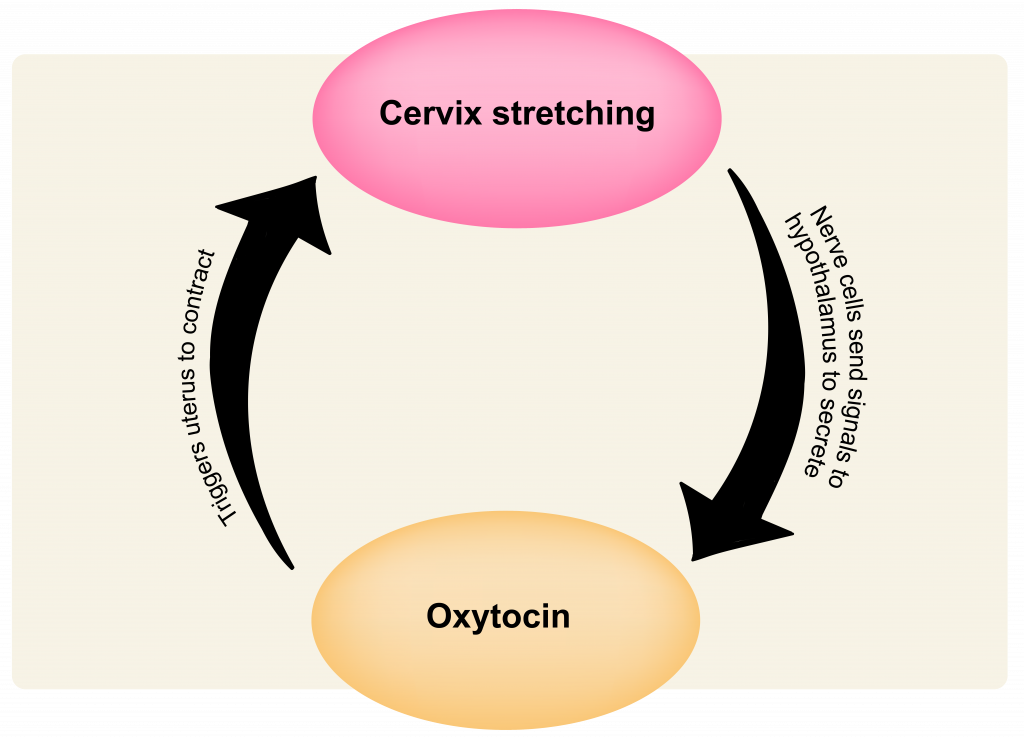15.6 Labor, delivery, and lactation
At about 40 weeks of gestation, a series of signals begins to ready the fetus for delivery and the pregnant body for labor. While the exact timing and sequence of events of labor can vary, labor and delivery is a classic positive feedback loop in that the early portions of labor amplify and further the onset of labor (see chapter 13 for a description of a positive feedback loop). Early labor can last between hours and weeks. In the early stages of labor there are mild uterine contractions that will move the baby’s head against the cervix. The pressure of the baby’s head stretch and begin to open the cervix. Nerve cells in the cervix detect the stretching and send signals to the hypothalamus in the brain to secrete the hormone oxytocin into the parent’s circulation. Oxytocin triggers the uterus to contract more forcefully, pushing the baby’s head further against the cervix and causing it to open further and signal for more oxytocin release. Uterine contractions eventually push the baby out through the open cervix and vagina.

Once the baby is delivered, additional uterine contractions push the placenta out as well. The expelled placenta is referred to as “afterbirth”. Here is a 3D imaging animation on the anatomical process of birth.
Lactation
Oxytocin, the same hormone that stimulated uterine contractions, also triggers the “let down” of milk from the breasts. Nipple stimulation increases oxytocin release. When a baby can nurse immediately after delivery it can help stimulate uterine contractions that will expel the placenta (or afterbirth). The early milk that a newborn receives is called colostrum. Colostrum contains high levels of antibodies and white blood cells from the parent; these can help the baby avoid infections. In addition to these immunity benefits, lactation is important in forging parent-infant bonds. The hormone oxytocin, which was involved in the initiation of lactation, is also involved in establishing this early attachment.
Check Yourself

